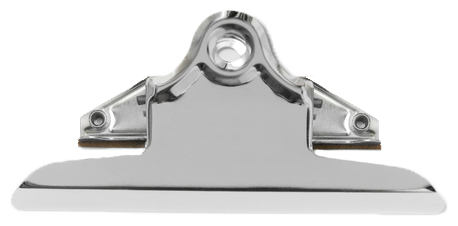What can it help
Chronic pain autoimmune disease or degenerative neurological disease.
Typical Culprits
Autoimmune and inflammatory diseases.
Let's Fix That
After 5 years of success, our experienced medical team knows both how to dose and monitor LDN.
DO YOU NEED Low-Dose Naltrexone?
The mechanism of action of naltrexone, in autoimmune diseases and cancer, is still being researched, but there are theories as to the mechanism of action that both explain why LDN works on both autoimmune diseases and cancers, as well as inflammatory disease. Once LDN is metabolized by the liver and eliminated from the body (after 3-4 hours), the elevated levels of endorphins produced, as a result of the rebound effect, can now interact and bind with the more sensitive and more plentiful opioid receptors.

Conditions That Could Benefit From LDN Treatment Include:
Crohn’s Diseases
Fibromyalgia
Melanoma
Cervical Cancer
Ulcerative Colitis
Glioma Patients
Gastrointestinal Disorders
Multiple Sclerosis
HIV/AIDS
Prostate Cancer
Autism
Hepatoblastoma
Metastatic Breast
Gulf War Syndrome
*For a list of current ongoing LDN studies, please go to the following website: CLICK HERE!
new patient special
FREE Evaluation
Our Professional TEAM

WE HAVE A UNIQUE WAY TO SOLVE CHRONIC PAIN
After 5 years of success, our experienced medical team knows both how to dose and monitor LDN. For those with chronic pain autoimmune disease or degenerative neurological disease please call our office today at (262) 785-5515 to get help with chronic pain in New Berlin WI.

SCHEDULE NOW!
Opioid Antagonist That Blocks
According to Mark J. Donahue’s paper on LDN that uses interviews from
Dr. David Gluck, Dr. Jacquelyn McCandless, Dr. Jarred Younger, and Dr. Ian Zagon:
“LDN is an opioid antagonist that not only blocks the reception of opiated, but also the body’s own endogenous opioids-endorphins. However, because LDN is administered in such a ‘low dose’ it is believed that LDN only briefly (for 3-4 hours) obstructs the effects of endorphins in what is called ‘the rebound effect.’"

The rebound effect results in three things happening:
- Opioid receptor production increases in order to try and capture more endorphins
- Opioid receptors sensitivity increases, also in order to try and capture more endorphins
- Production of endorphins is increased in order to compensate for the perceived shortage
Once LDN is metabolized by the liver and eliminated from the body (after 3-4 hours), the elevated levels of endorphins produced, as a result of the rebound effect, can now interact and bind with the more sensitive and more plentiful opioid receptors. These opioid receptors, are found throughout the body, including virtually every cell of the body’s immune system.
take action now
FREE Evaluation
Low-Dose Naltrexone (LDN) Fact Sheet
Naltrexone is an opioid antagonist used primarily in the management of alcohol and opioid dependence; the FDA approved Naltrexone in 1984 at 50 mg. However, “accumulating evidence suggests LDN can promote health supporting immune-modulation, which reduces various oncogenic inflammatory autoimmune processes”
The value of Naltrexone as an immune modulator was recognized by Dr. Ian Zagon at the University of Pennsylvania. 2,3 The late Dr. Bernard Bihari, a Neuro-physician from New York, USA (who passed away on May 16th, 2010) began treating his patients in the late 1980s4,5. Since that time, many doctors throughout the United States prescribe LDN for a number of indications including Multiple Sclerosis (MS), Parkinson’s disease, Crohn’s disease, HIV/AIDS, cancer, and other autoimmune and inflammatory diseases.
A number of research and clinical trials have been completed and undergone in regards to LDN immunotherapies, with phase I and phase II clinical trials successfully run at a number of universities in the United States and Europe, including Pennsylvania State University Medical School at Hershey; University of Chicago; State University of New York; SUNY Upstate Medical University; London Health Sciences Centre - University Hospital, USA; Alpert Medical School of Brown University; Department of Neurology, San Raffaele Scientific Institute; Division of Rheumatology, St. Louis College of Pharmacy; Department of Internal Medicine, University of Utah; Jondi-Shapoor University of Medical Sciences; Department of Psychiatry & Behavioral Sciences, Duke University Medical Center; and Multiple Sclerosis Center at UCSF6. These efforts were pioneered by leading immunologists Dr. Nicolas Plotnikoff, Dr. Ronald Herberman, Dr. Bernard Bihari, Dr. Angus Dalgleish, Dr. Ian S. Zagon, Dr. Jill Smith, Dr. McLaughlin, Dr. Jacqueline McCandless, and Moshe, Rogosnitzky, among others.
The elevated levels of endorphins will usually last around 18-20 hours. During this time the elevated levels of endorphins act by up-regulating vital elements of the body’s immune cells. By doing so clinical trials has been shown that elevated levels of
- Down regulating inflammatory cytokines
- Reducing inflammation and oxidative stress
- Facilitating tissue repair and wound healing
- Restoring T-helper/CD4 levels
- Restoring the balance between Th1 & Th2 lymphocytes
- Increasing cytotoxic T cells and natural killer (NK) cells
- Regulating cell growth & inhibiting tumor growth
- Reducing excitotoxicity and microglial activation
- Reducing apoptosis of the myelin-producing oligodendrocytes
- Stimulating mucosal healing (lining of bowel)7
According to Dr. Nancy Sajben in an article she wrote about LDN, she explains its mechanism as follows:
“In 2008 the US and UK have shown that naltrexone in addition to binding to the opiate receptor’s binds to Toll Like Receptors (TLR). There are 13 TLRs and so far they have studied naltrexone only in two of them TRL4 and TRL9. That is important because the TLR receptors are part of the innate immune system and affect the inflammatory markers.
The Toll-Like Receptors are not like other receptors. They are not there snug little pockets where naltrexone binds. Instead the Toll Like Receptors are like an entire football field, with enormous nooks and crannies where it has many interactions with many molecules. Now, in 2010, scientists are asking in naloxone or naltrexone is acting at TLR4 or even higher up in the cascade.
The study of immune cell glial interactions is in its infancy. Glial cells are the immune cells in your central nervous system (brain, spinal cord)/ They are very involved in dysregulation of pain systems, neuroinflammation, and some neurological diseases such as Multiple Sclerosis, Alzheimer’s, Parkinson’s disease Autism, ALS, infections of the brain, etc.”8
- Malaria
- Hepatitis c
- Rheumatoid Arthritis
- Systemic Lupus Erythematosus
- Parkinson’s Disease
- Wound Healing
- Malignant Melanoma
- Glioblastoma
- Liver Cancer
- Multiple Myeloma
- Ovarian Cancer
- Epstein-Barr Syndrome
- Lung Cancer
- Bladder Cancer
- Breast Cancer
- Lymphoma (Hodgkin’s and Non-Hodgkin’s)
- Colon & Rectal Cancer
- Uterine Cancer
- Throat Cancer
- Neuroblastoma
- Renal Cell Carcinoma
According to LDNScience.org, a public information project of the MedInsight® Research Institute, co-founded by Moshe Rogosnitzky:
“There is no single dose that will work for every person. Some people find that a daily dose as low as 2 mg is effective, and others have found that they achieve greatest benefit using two doses of 4.5mg each day (12 hours apart). The clinical trials so far have used a single daily dose of 4.5 mg and for most users this dose seems to be effective.”9
Dr. Terry Grossman, M.D. give the following recommendations regarding dosing in his lecture on LDN
According to lowdosenaltrexone.org, “patients report sleep problems (vivid dreams or insomnia), which gradually fade away after the first week of treatment. If sleep problems continue, a modification in the dosage usually takes care of the problem.”11
The LDN Trust reports that “some patients, very rarely, experience gastro-intestinal side effects. Nausea and or constipation/diarrhea. The reason for this is currently unknown, but it may be due to the presence of large numbers of TLR4 receptors in intestines.”12
Lowdosenatrexone.org also states the following cautionary warnings:
- Because LDN blocks opioid receptors throughout the body for three or four hours, people using medicine that is an opioid agonist, i.e. narcotic medication- such as Ultram (tramadol), morphine, Percocet, Duragesic patch or codeine-containing medication- should not take LDN until such medicine is completely out of one’s system. Patients who have become dependent on daily use of narcotic-containing pain medication may require 10 days to 2 weeks of slowly weaning off of such drugs entirely (while first substituting full doses of non-narcotic pain medications) before being able to begin LDN safely.
- Those patients who are taking thyroid hormone replacement for a diagnosis of Hashimoto’s thyroiditis with hypothyroidism ought to begin LDN at the lowest range (1.5mg for an adult). Be aware that LDN may lead to a prompt decrease in the autoimmune disorder, which then may require a rapid reduction in the does of thyroid hormone replacement in order to avoid systems of hyperthyroidism.
- Full-dose naltrexone (50mg) carries a cautionary warning against its use in those with full liver disease. This warning was placed because of adverse liver effects that were found in experiments involving 300 mg daily. The 50mg dose does not apparently produce impairment of liver function nor, of course, do the much smaller 3mg and 4.5mg doses.
- People who have received organ transplants and who therefore are taking immunosuppressive medication on a permanent basis are cautioned against the use of LDN because it may act to counter the effect of those medications.
This information is not intended as medical advice. Responsibility for patient care resides with healthcare professionals on the basis of their professional license, experience, and knowledge of a patient. In addition, this information (and any accompanying material) is not intended to replace the attention or advice of a physician or other qualified health care professional. Anyone who wishes to embark on any dietary, drug, exercise, or other lifestyle change intended to prevent or treat a specific disease or condition should first consult with and seek clearance from a physician or other qualified health care professional.
References:
Brown N, Panksepp J. Low-dose naltrexone for disease prevention and quality of life. Med Hypotheses. 2009;72:333-337. Doi:10.1016/j.mehy.2008.06.048.
Zagon IS, McLaughlin PJ. Naltrexone modulates tumor response in mice with neuroblastoma. Science. 1983;221:671-673. Doi:10.1126/science.6867737.
Zagon IS, McLaughlin PJ. Naltrexone modulates body and brain developments in rats: a role for endogenous opioid systems in growth. Life Sci. 1984;35:2057-2064.
http://www.ncbi.nlm.nih.gov/entres/query.fcgi?cmd=Retrieve&db=PubMed&dopt=Citation&list_uids=6092812.
Bihari B, Ottomanelli GA, Drury F, Ragone VP. T-cell subsets and treatment response in AIDS. AIDS Res. 1986;2(4):263-266
Bihari B, Finvola DM, Ragone VP, Ottomanelli GA, Buimovici-klein E. Low Dose Naltrexone in the Treatment of Acquired Immune Deficiency Syndrome. 1988;(June).
ClinicalTrials.gov
https://clinicaltrials.gov/ct2/results?term=low+dose+naltrexone&Search=Search. Accessed January 1, 2015.
Donahue MJ. Low-Dose Naltrexone (LDN). 1995;(4).
Sajben N. LDN World Database. 2011. http://painsandiego.com/2011/01/12/Idn-world-database/.Accessed February 23, 2015
LDNScience – How Does LDN Work? http://www.ldnscience.org/low-dose-naltrexone/how-does-ldn-work. Accessed February 23, 2015
Grossman T. Low Dose Naltrexone (LDN) Lecture. 2014:1-10.
The Low Dose Naltrexone Homepage.
http://www.lowdosenaltrexone.org/#Are_there_any_side_effects. Accessed February 25, 2015.
Trust LR. Low-dose Naltrexone (LDN) Fact Sheet 2015.2015:1-17. Doi:10.1111/j.1526-4637.2009.00613.x/abstract.
For the most recent version of this document and access to more published data and studies on LDN, please go to:
https://tnibio.sharepoint.com/sites/ImmuneInfo
Username: Immunepub@immunetherapeutics.com

POST-TREATMENT BENEFITS MAY INCLUDE:

Elevated Mood
Regain your vitality for life by improving your all-around well-being.

Less Dependency on Medications
You don't always need to turn to medications and surgery for relief.

A Fulfilling Lifestyle
Reclaim your active lifestyle!
